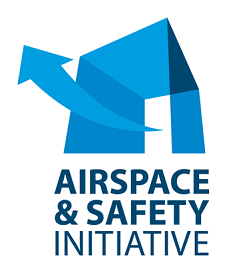New Listening Squawks
Posted by flysynergy on May 22, 2012 in Flight Safety, GA News | Comments Off on New Listening SquawksInformation below correct at time of publishing. For the latest information on listening squawks please visit www.flyontrack.co.uk
New Codes For Leeds Bradford & East Midlands

Frequency Monitoring Secondary Surveillance Radar (SSR) codes (often referred to as ‘listening out’ squawks) are soon to be allocated for use in the vicinity of Leeds Bradford and East Midlands airports, the UK Civil Aviation Authority (CAA) has announced. The codes will become effective from 28 May 2012 for Leeds Bradford, and 30 June 2012 for East Midlands. The two new codes will take the total number of frequency monitoring codes across the UK to nine.
The code for Leeds Bradford will be 2677 and the radio frequency to monitor is 133.125 MHz, while for East Midlands the code will be 4572 and the radio frequency 134.175 MHz. An Information Notice (2012/082) with more details has been published by the CAA.
How To Use Listening Squawks
Frequency monitoring codes have played a vital role in reducing infringements of controlled airspace (CAS) by enabling air traffic controllers to alert pilots if their aircraft appears to be going to infringe CAS. Any aircraft fitted with a Mode A/C or Mode S SSR transponder can use these codes.
The listening squawks are designed to enable pilots flying near the boundary of controlled airspace, who are not in two-way communication with an ATSU, to listen out on the controlling frequency of the airspace. By entering the relevant four-digit SSR code into the transponder and listening to the published radio frequency, a pilot signifies to air traffic control that he/she is actively monitoring radio transmissions. If it looks likely an aircraft will infringe controlled airspace, ATC know that they can contact the pilot on the relevant frequency and pass further information as appropriate to the pilot.
The Current List
Belfast Aldergrove / 7045 / 128.500 MHz
Leeds Bradford / 2672 / 133.125 MHz
Doncaster Sheffield / 6170 / 126.225 MHz
Manchester / 7366 / 118.575 MHz
East Midlands / 4572 / 134.175 MHz
Birmingham / 0010 / 118.050 MHz
Luton & Stansted / 0013 / 129.550 MHz (LTN) & 120.635 MHz (STD)
Gatwick & London City / 0012 / 126.825 MHz (LGW) & 132.700 MHz (LCY)
Southampton & Bournemouth / 0011 / 120.225 MHz (SOU) & 119.475 MHz (BOH)
Olympic Squawk For Farnborough
The CAA also announced that a code is being introduced for use by Farnborough Airport for the duration of the London 2012 Olympics. From 14 July to 15 August 2012 Temporary Controlled Airspace (CAS (T)) is being put in place around Farnborough to help deal with a significant expected increase in traffic. To help prevent any infringements of this CAS(T), pilots operating outside the Olympics Restricted Zone R112 in the Farnborough (West) LARS area who are unable or do not wish to receive an air traffic service, can select code 5047 on their transponders while listening on the Farnborough (West) LARS frequency, 125.250 MHz.
Source: Airspace & Safety Initiative
